Nikon only manufactures TC-E2 2X and TC-E3ED 3X for the 950/990/995/4500. To gain a higher power, we must use non-Nikon converters. Unfortunately, there are not very many high power converters, and virtually all of them are monoscopes. Popular ones include EagleEye (5X), CrystalVue Sharp Shooter (8X), Kenko KUT-832 (8X), Kenko KDT 60 (6X) and Kenko KDT 820 (8X). Since the EagleEye 5X is too expansive, and the Kenko KDT 820 8X is too small compared with Kenko KUT-832 8X, I do not expect many 950/990/995/4500 users would use these two monoscopes. So, an important question is: what is the performance of each of these popular monoscopes? We shall try to answer this question on this page by comparing four monoscopes that I have: a Russian made 14X mirror monoscope, CrystalVue 8X, Kenko 8X (KUT-832) and Kenko 6X. We shall look at their performance at (almost) infinity, at a couple hundred meters, at a few meters, and close-up. In each comparison, we will look at the sharpness, contrast and chromatic aberration of each lens.
Of these four monoscopes, CrystalVue Sharp Shooter 8X and Kenko KDT 60 6X were discussed and compared on another page. Here, we only review the Russian made 14X reflector and the new Kenko KUT-832 8X. We will not consider the smaller Kenko KDT 820 8X.
The Kenko 8X for short, is a re-release of Kenko's popular 8X monoscope by adding a rear thread for digital camera use. It comes with front and rear caps, a 28-36mm step-up ring and a 37-36mm step-down ring (the rear thread of this Kenko 8X is 36mm), a tripod collar, and a mount lock ring. See the left image below. The 28-36mm step-up ring is for Coolpix 950, 990, 995 and 4500 cameras, and the 37-36mm step-down ring are for other cameras that have 37mm threads. The right image below shows a Kenko 8X mounted on a 4500. A unique advantage of Kenko 8X that others do not have is its tripod collar. This is especially useful to 950/990/995/4500 users because once the camera is put on a tripod, the lens unit will not be able to rotate freely to certain position. This tripod collar eliminates this problem. Moreover, it is easier to point the lens mounted on a tripod to a distant subject than to mount the camera on a tripod and point the lens to a subject. This tripod collar is certainly a big plus.
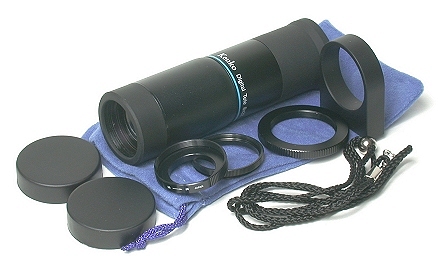
|
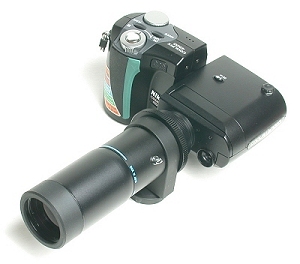
|
There are many Russian made mirror-type monoscopes available. If you are lucky, you might be able to find a very good one in less than $100. Mirror lenses (or reflectors) fold light path, and, as a result, can make a long lens fit in a short lens tube. These Russian reflectors are normally in the range of 12X and 14X, although some are lower. I believe the one shown in the left image below is a 13X or 14X. However, I am not certain since it came with nothing but a lens and a pouch! This is one of the best Russian reflectors that I have, and is very well-built. Since there is no thread for mounting it on any camera, I use an adapter made by LE-Adapter. All of this kind of adapters are not very convenient to use for those who are used to step rings, because one must adjust screws and things like that to make sure the exit pupil lies precisely at the center. See the right image below.

|
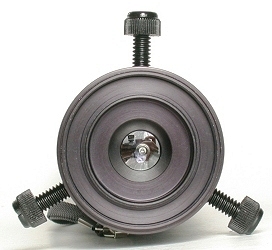
|
The left image below shows the 14X lens with the LE-Adapter, and the right one shows the lens mounted on a 4500. As you can see, the size of the 14X lens is quite large and a little heavy. If the 4500 is on a tripod, the LE-Adapter may not be capable of holding the lens firmly in the same direction for a long period. Unfortunately, the lens has no tripod mount. I found that the best way of shooting with this lens is the use a large bean bag, or holding the whole setup on a table firmly with one or two screws (of the LE-Adapter) serving as a support.
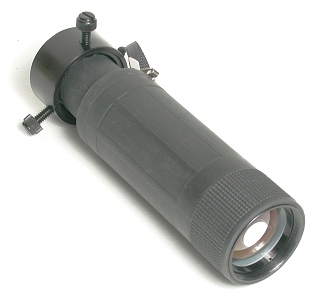
|

|
It is interesting to point out that the LE-Adapter as well as other adapters may be used to hook a binocular to your 950/990/995/4500 as shown below. Since you can easily find a 8X, 10X or even higher power binocular, you will have a handy teleconverters!
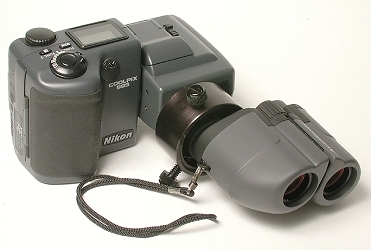
Of these four lenses, the 14X is the easiest to focus. In about 3/4 turn, the lens goes from infinity to the closest distance with an extension of only 3mm, and the focusing ring is a little stiff but uniform. The CrystalVue 8X is the most difficult to focus because the friction of the focusing ring is to strong, and it takes nearly four turns to focus from infinity to the closest distance with an extension of nearly 32mm. The Kenko 8X takes about 3 1/2 turns to focus from infinity to the closest distance with an extension of nearly 30mm. The Kenko 6X takes 2 3/4 turns to focus from infinity to the closest distance with an extension of 20mm. The Kenko 8X and 6X both have stiff focusing rings; but, they are not as hard to use as the CrystalVue 8X. The Kenko 6X is much easier to focus than the other two. The following images compare the lengths of the lens when they are fully extended.
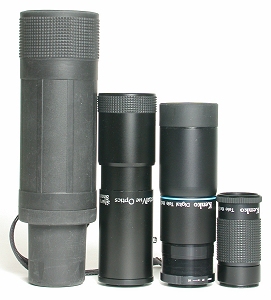
|
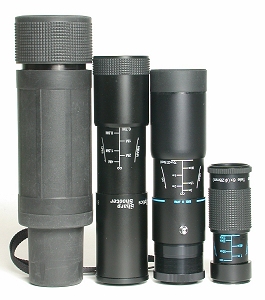
|
| At infinity | At closest distance |
The camera settings are all default, the compression level is NORMAL, and the shooting mode is aperture-priority with aperture F7.3 and maximum zoom. The reason of choosing F7.3 is that it is neither too small that could reduce shutter speed to a level that is too difficult to eliminate camera shake and diffraction could make the image quality worse, nor too large (i.e., F5.1) that the lens is not at its best condition. The camera used for this testing is a Coolpix 4500.
For each chosen scene, all lenses are used to take a numbers of shots; however, only the best will be kept for comparison purpose. In each comparison, we will show the center portion or a corner of the image. In some cases, due to lower contrast of the scene, the selected focusing area may not be at the center. We will also make it clear and only compare the area that was used for focusing.
The first involves the following scene. We shall look at the marked center area.

The following images were taken approximately at the same time with the 14X, CrystalVue 8X, Kenko 8X, and Kenko 6X monoscopes. The focus area is set to the small window of the house. The images of the cropped center area are shown on the right column. The images are resized and sharpened a little. Click on the image to see its original, large size one. It is obvious that the image of the 14X shows noticeable vignetting. It is also interesting to point out that the Kenko 8X has a very slightly higher magnification than that of the CrystalVue 8X. This is demonstrated by the size of the house in the image on the first column.
Since the aperture is fixed to F7.3, the variation of shutter speed used by each lens shows the degree of light loss. The recorded information shows that the 14X, CrystalVue 8X, Kenko 8X and Kenko 6X used 1/35 sec, 1/137 sec, 1/114 sec and 1/71 sec, respectively. Of these four lenses, the CrystalVue is the fastest with 1/137 sec, which is about 1 stop faster than the Kenko 6X, and about 2 stops faster than the 14X. Even though the CrystalVue 8X and Kenko 8X are both of 8×32 type, the former is slightly faster than the latter with a difference of about 1/5 stop. Similarly, the Kenko 8X is about 3/5 stop faster than the Kenko 6X, which, in turn, is 1 stop faster than the 14X. The following table is a summary. To compare the speed difference between lens A and lens B, one can choose row A and locate column B. The number in that entry tells the relative speed between them. For example, if we choose A and B to be CrystalVue 8X and Kenko 6X. Then, the entry on row CrystalVue 8X and column Kenko 6X is +1, which means the former is approximately +1 stop faster than the latter. On the other hand, if we choose row Kenko 6X and column CrystalVue 8X, we shall see -1, which means Kenko 6X is 1 stop slower than the CrystalVue 8X. Note that all numbers are approximations and are provided for your reference only.
| |
14X | CrystalVue 8X | Kenko 8X | Kenko 6X |
| 14X | 0 | -2 | -1 1/5 | -1 |
| CrystalVue 8X | +2 | 0 | +1/5 | +1 |
| Kenko 8X | +1 1/5 | -1/5 | 0 | +3/5 |
| Kenko 6X | +1 | -1 | -3/5 | 0 |
The cropped images show that the CrystalVue 8X is the sharpest lens of the four. The texture of the stone wall and siding of the house is clearly shown. One can barely see the texture and silhouette of the roof. The 14X is the second. With a 14X high power, this lens can still resolve the stone and siding texture well; however, the texture and silhouette of the roof is softer than the one taken with the CrystalVue 8X. The third, in my opinion, is the Kenko 6X. The worst is the Kenko 8X. Its image is so soft and the texture of the stone, siding and roof is very blurry. The 50% reduction and sharpened result is still worse than the Kenko 6X. So, in this comparison, the 14X is a surprise, the CrystalVue 8X holds up its leading position which is consistent with my previous test against the Kenko 6X, and the Kenko 8X is a big disappointment.
| |
Original | Cropped |
| 14X | 
|

|
| |
F7.3 1/35 sec | |
| CrystalVue 8X |

|
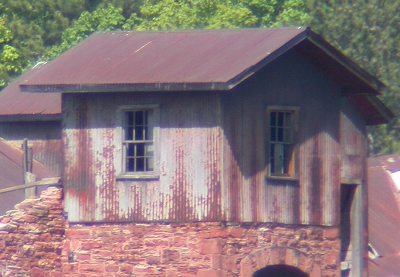
|
| |
F7.3 1/137 sec | |
| Kenko 8X |

|
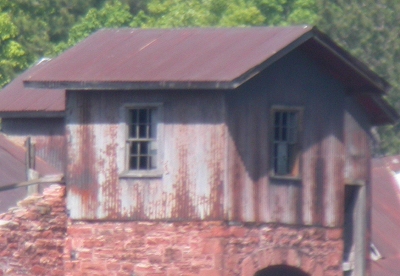
|
| |
F7.3 1/114 sec | |
| Kenko 6X |

|

|
| |
F7.3 1/71 sec | |
| Click on the image to see its ORIGINAL large image | ||
Next we shall examine chromatic aberration, which is a typical problem with high power scopes. The following images are crops from their corresponding ones shown above. Note that the Kenko 6X is increased 130% to make it approximately the same size as the others, while the image of the 14X is reduced 50%. This will not affect the detection of chromatic aberration too much. From the images one can conclude that the CrystalVue 8X has excessive chromatic aberration and is the worst of the group. The Kenko 8X has some but not very significant, while the Kenko 6X does not show chromatic aberration except perhaps for the lower-left corner (but it is very minor). The image of the 14X does not exhibit any significant chromatic aberration, which is usually the case for mirror type monoscope. However, this does not mean that all mirror type telescopes do not have chromatic aberration. The mirror design can reduce chromatic aberration significantly but does not eliminate all, especially in cheap ones. Moreover, the eye-piece may introduce some. From this image, the 14X is simply very good.
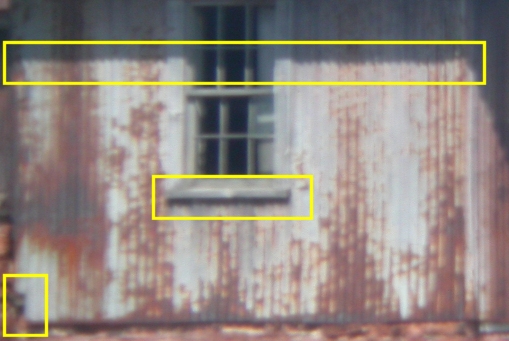
|
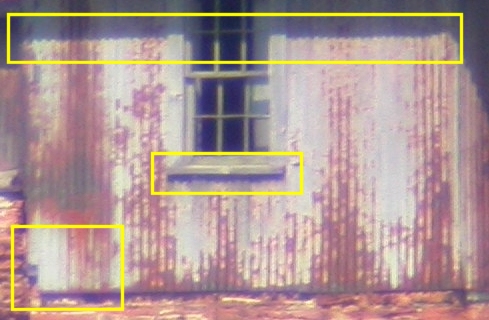
|
| 14X | CrystalVue 8X |
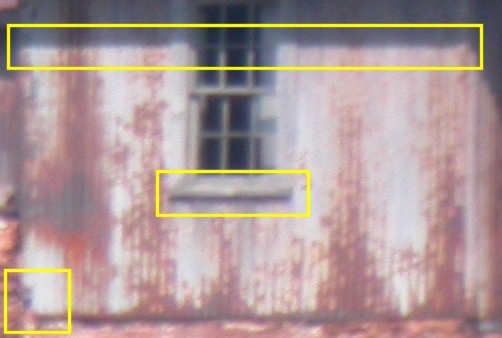
|
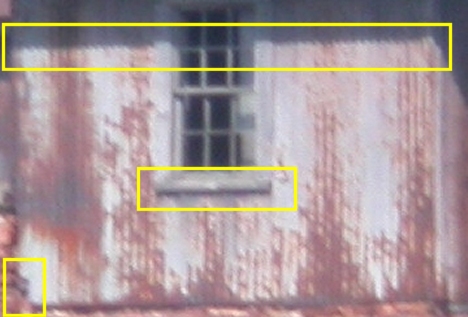
|
| Kenko 8X | Kenko 6X |
The subject in this comparison is 50% closer to the shooting position than the previous one. Again, the first column shows the images taken with the 14X, CrystalVue 8X, Kenko 8X and Kenko 6X, and the second column shows the cropped center area. Because this area consists of mainly straight-line textures, it is even easier to see the resolving power of each lens. Again, the 14X exhibits noticeable vignetting. All four lenses show various degree of pincushion distortion; but, the 14X seems a little better than the other three. The exposure information also shows the same differences among the four lenses.
Examining the cropped areas, it is not difficult to conclude that the 14X is the sharpest, followed by the CrystalVue 8X, followed by the Kenko 6X. The Kenko 8X, again, is the worst. Also note that the 14X and CrystalVue 8X yield higher contrast images than the Kenko lenses, which may contribute to the sharpness of their images.
| |
Original | Cropped |
| 14X | 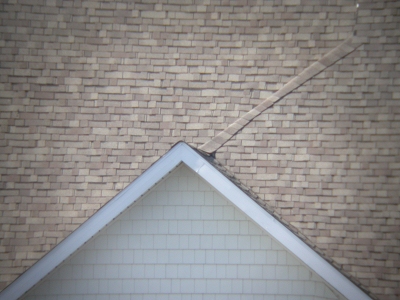
|
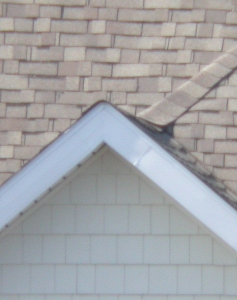
|
| |
F7.3 1/27 sec | |
| CrystalVue 8X |
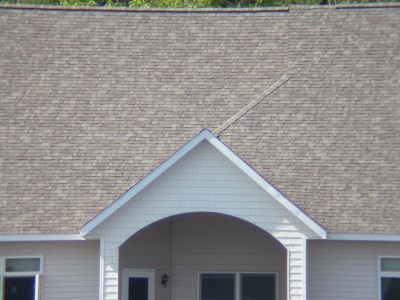
|
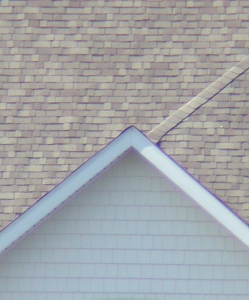
|
| |
F7.3 1/130 sec | |
| Kenko 8X |
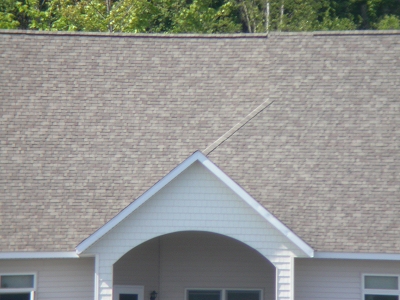
|
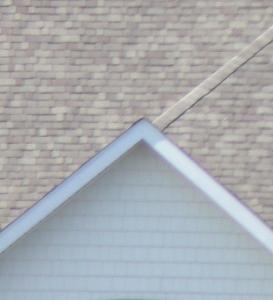
|
| |
F7.3 1/103 sec | |
| Kenko 6X |
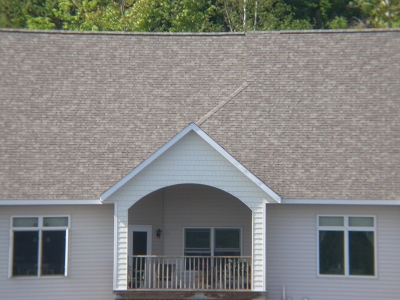
|
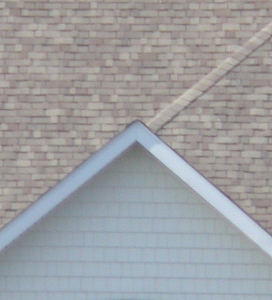
|
| |
F7.3 1/67 sec | |
| Click on the image to see its ORIGINAL large image | ||
The four images below show the upper-right corner of the original ones. In spite of the noticeable vignetting of the 14X, its image still looks sharp! The CrystalVue 8X and Kenko 8X perform similarly. However, it appears that the CrystalVue 8X is a little sharper with higher contrast than the Kenko 8X. The Kenko 8X image looks very flat and lacks of contrast. The Kenko 6X is soft and definitely the worst; however, its contrast seems better than the Kenko 8X and maybe as good as the CrystalVue 8X.
| 14X | CrystalVue 8X | Kenko 8X | Kenko 6X |
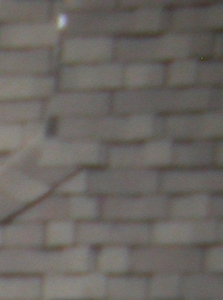
|
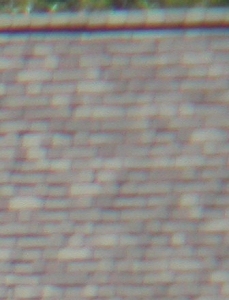
|
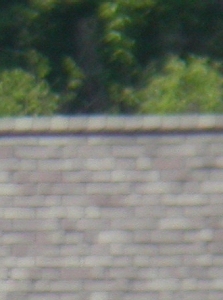
|
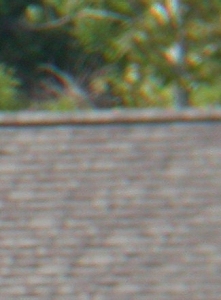
|
| Click on the image to see its ORIGINAL size | |||
Next, we shall look at chromatic aberration in these images closely. The left image below was taken with the 14X. There are three places showing some chromatic aberration along the edges. The most significant one is marked in yellow in the left image, and the right image shows the cropped area from the original. As you can see, this is a greenish fringe and is not very significant. Thus, the 14X performs quite well in the chromatic aberration department.
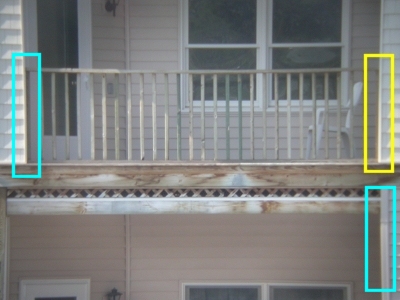
|

|
| Click the image to see the ORIGINAL one. | |
The CrystalVue 8X has a bad reputation in chromatic aberration. In the images below, virtually all non-horizontal edges exhibit some degree of chromatic aberration. Some of them have dark purple fringes, some have very light purple fringes, and the remaining have greenish fringes. Even the straight edges of the roof have a touch of blue/purple. The middle and right images below show the areas marked by a light blue rectangle and a yellow rectangle, respectively. Thus, in terms of chromatic aberration, the CrystalVue 8X is much worse than the 14X.
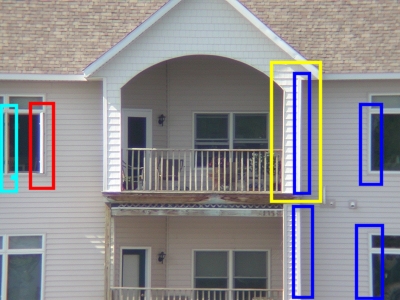
|

|

|
| Click the image to see the ORIGINAL one. | |
|
The Kenko 8X has a much better control of chromatic aberration than the CrystalVue 8X. The images below show the result. The image does contain signs of chromatic aberration, and the more significant ones are marked by light blue (bluish/purple fringe) and yellow (greenish fringe) rectangles. In fact, greenish fringe is minimal, and purple fringes is noticeable but not as bad as those we saw in the images produced by the CrystalVue 8X.
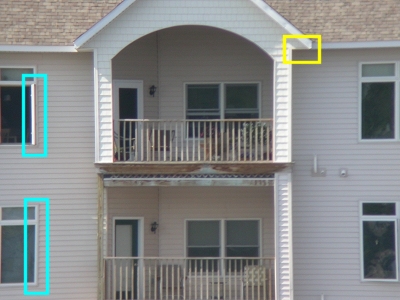
|

|

|
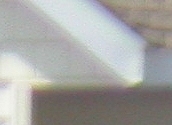
|
| Click the image to see the ORIGINAL one. | |
|
|
The Kenko 6X also has a well-controlled chromatic aberration as shown in the images below. But, it seems worse than the Kenko 8X, since there are more places where one can see greenish and purple fringes.
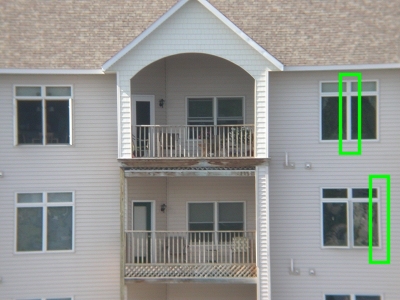
|

|

|
| Click the image to see the ORIGINAL one. | |
|
From these comparisons, it appears that the CrystalVue 8X sacrifices the control of chromatic aberration for sharpness, and the Kenko 8X and Kenko 6X take the opposite approach. Of these two, the Kenko 8X is softer and has better control over chromatic aberration than the Kenko 6X.
The following compares the performance of the lenses with a moderate camera-subject distance. The way of taking photos for comparison is slightly different, because we will move the camera. A small object is placed about 6 meters away so that the CrystalVue 8X and Kenko 8X can both take tight shots. The Kenko 6X is moved closer to take a similar shot. Do the same with a Coolpix 4500 (in macro mode) for the same purpose. However, to make a tight shot with the 14X, the lens must be moved very far away which is not practical in the environment this comparison was done. Thus, the 14X, CrystalVue 8X and Kenko 8X are all at the same position. In the following, the first column shows the composition of each shot. Click on the image to bring up a 800×600 one. The mouth portion of each shot is cropped and shown on the second column. However, the mouth portion of the 14X is resized. So, click on the image to see the original one.
There is no doubt that the 4500 image is the sharpest. Although the highlight portions are washed out somewhat, the 4500 image shows all the details including dust. (Sorry, I forgot to blow dusts off the object.) The second sharpest is still the 14X. This 14X is capable of preserving some details without showing chromatic aberration, although the image is under-exposed. The third place goes to the Kenko 6X. In fact, in my opinion, the Kenko 6X is just a little behind the 14X in terms of sharpness. There is no chromatic aberration either, although the lower right portions of the lion nose may have a very slight touch of purple. The CrystalVue 8X is still sharper than the Kenko 8X; however, its chromatic aberration is so bad that the whole image has a very slight bluish touch. Again, the Kenko 8X is soft and ranked the last.
The following compares the close-up capability of the lenses. First, I did a measure of the minimum working distance (i.e., the shortest distance between the subject and the front of the lens) of each lens. Here is my findings:
| Lens | Minimum Working Distance |
| 14X | 8 feet |
| CrystalVue 8X | 25 1/2 inches |
| Kenko 8X | 28 inches |
| Kenko 6X | 9 1/4 inches |
This measurement is slightly different from my previous review of the Kenko 6X and CrystalVue 8X; but, the difference is not very significant. Since the minimum working distance of the 14X is so large, it is not used for this close-up comparison. The following images were taken with the 4500 in macro mode, the CrystalVue 8X, Kenko 8X and Kenko 6X, all at their minimum working distance. The focusing point is the word "Jupiter" in the middle of a $0.37 stamp.
From the images, it is clear that none of these high power monoscopes can compete against the 4500 in macro mode, although every one of them has a higher magnification than that of the 4500. In terms of magnification, the Kenko 6X is the highest, followed by the Kenko 8X, followed by the CrystalVue 8X. Note that the magnification of the Kenko 8X is only slightly higher than the CrystalVue 8X. Image quality-wise, the sharpness of the CrystalVue 8X is still slightly better than Kenko 8X and Kenko 6X. Note that CrystalVue 8X's contrast is higher than that of the Kenko 8X, and significantly higher than that of the Kenko 6X. Hence, it appears to me that although these monoscopes claim to be good for macro, their image quality is not up to my expectation.
After comparing these four monoscopes, here is a list of my findings:

|
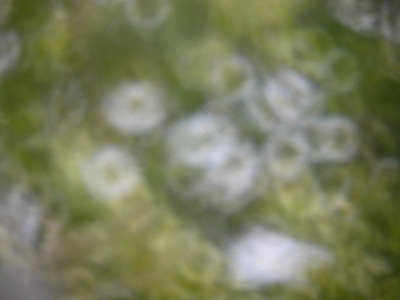
|
| Click on the image to see its 800×600 one | |